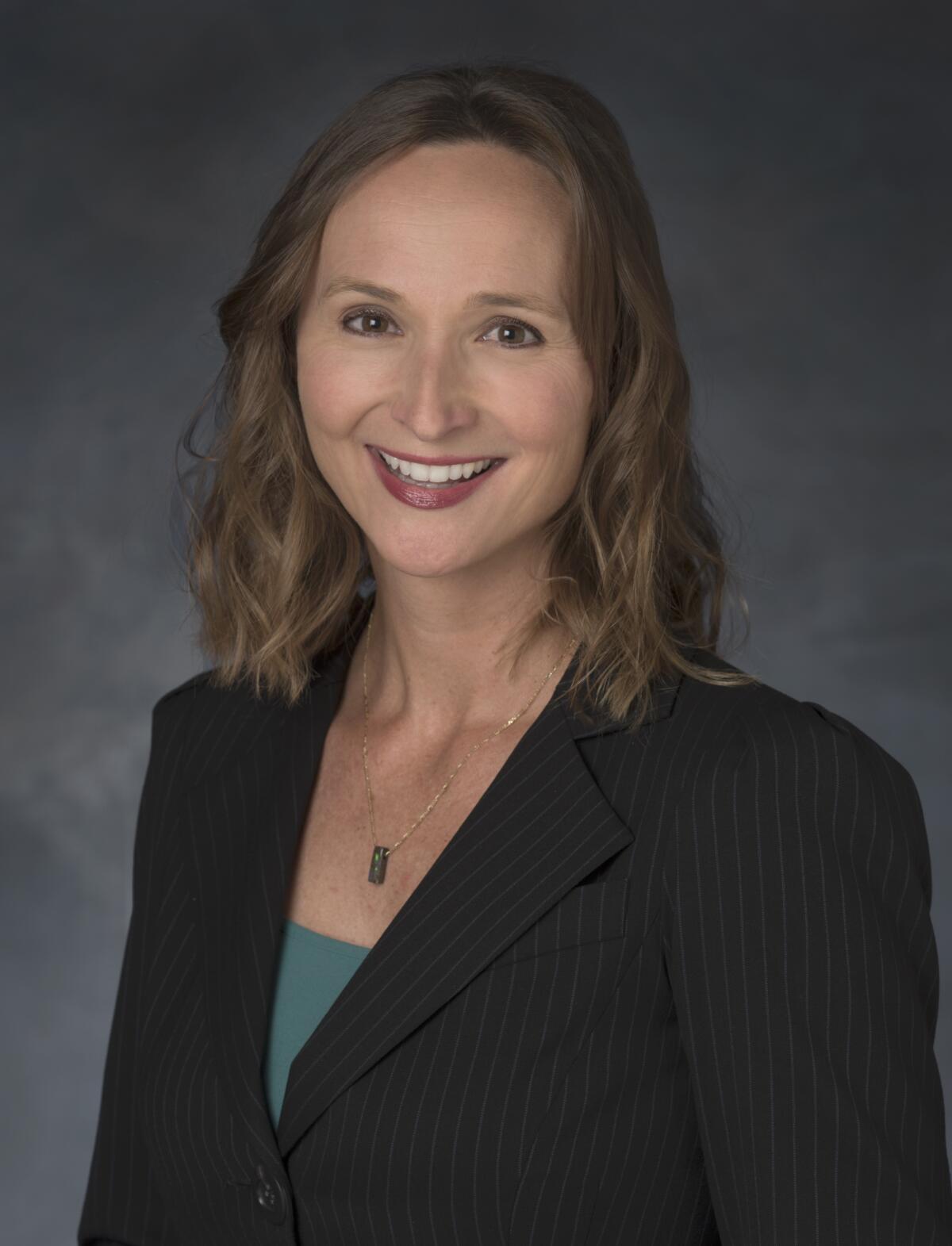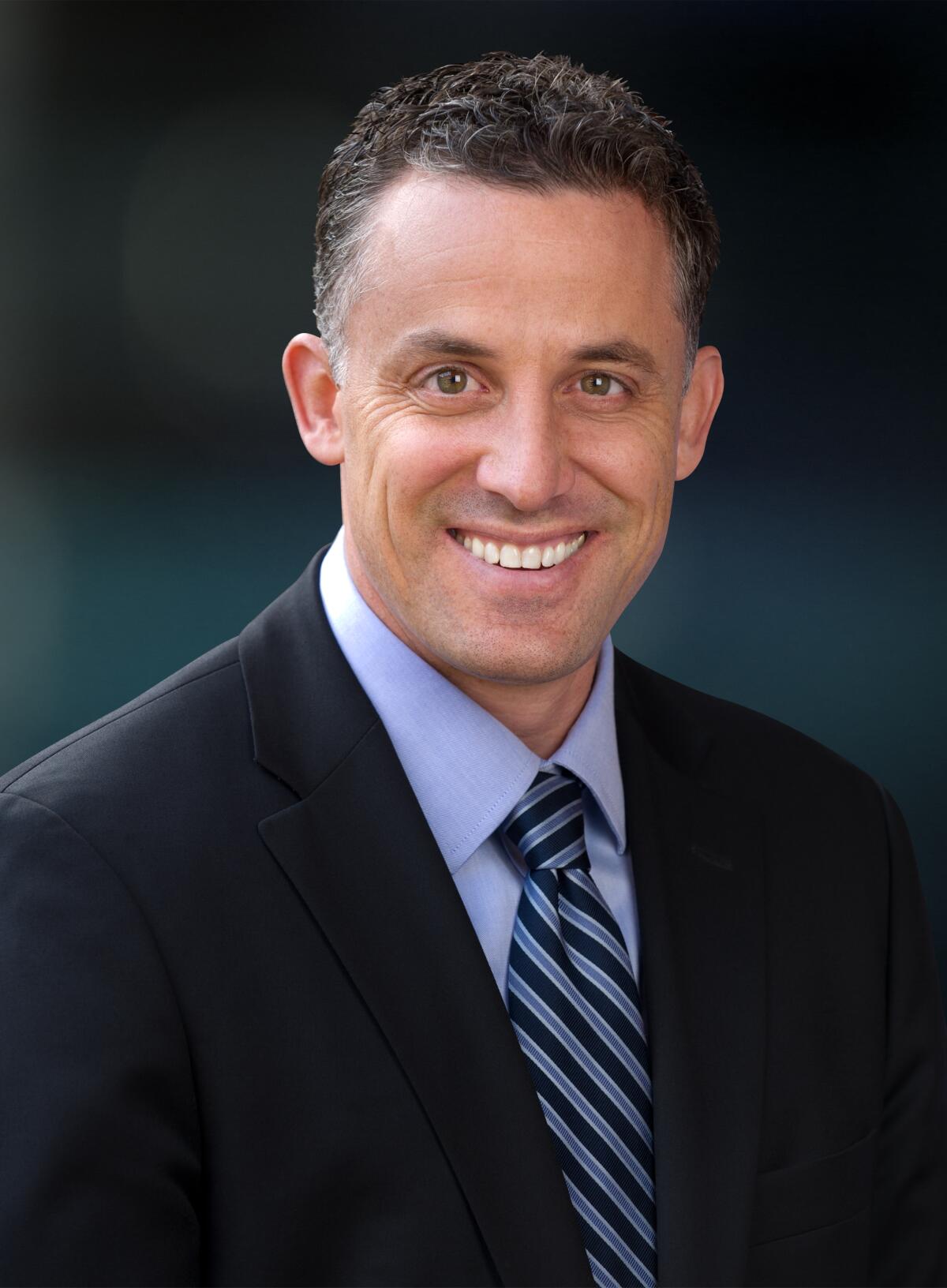Andrew Apfelberg, Julia A. Gowin and Trever F. Acers Give Insights on Beauty, Fashion & Consumer Goods
The Beauty, Fashion & Consumer Goods panel is produced by the L.A. Times B2B Publishing team in conjunction with Greenberg Glusker LLP; Lathrop GPM LLP; and Objective, Investment Banking & Valuation.
When it comes to the ever-evolving beauty, fashion and consumer goods industries, Southern California remains a prominent global leader in terms of trends, innovation, sustainability and protocols.
Many of the leading products and services behind keeping people living well, looking good and feeling great are from businesses and organizations that were started and continue to thrive here in Los Angeles and the surrounding areas. In fact, successful beauty and self-care companies are catalysts for significant economic growth in the region.
As the legal landscape around fashion, beauty and consumer products continues to adjust and shift, an increasing number of consumers, businesses and investors are tasked with navigating an often-complex set of rules. As with any consumer-facing industry, learning about the ins and outs of the sector can be overwhelming.
To take a closer look at the latest developments and trends in the business of beauty, fashion and consumer goods, we have turned to three of the region’s leading authorities, who graciously weighed in for a discussion and shared insights.
Q: What are some legislative issues that beauty product brands need to be aware of?

Julia A. Gowin, Partner, Lathrop GPM LLP, lathropgpm.com: California is the first state to ban 24 ingredients used in personal care products including formaldehyde, mercury, isobutyl paraben, and isopropyl paraben. The Toxic Free Cosmetics Act (Assembly Bill 2762) goes into effect on January 1, 2025. Further, Assembly Bill 2721 will prohibit the sale of any cosmetic product that contains any intentionally added per- and poly-fluoroalkyl substances – commonly known as “PFAS.” On August 30, 2022, the CA assembly also passed AB 1817, which would prohibit intentionally added PFAS in apparel. California’s legislation will have a significant impact on those that sell goods interstate. Beauty and fashion brands should review each ingredient used in their products to ensure compliance with these regulations if they intend to sell their products in California. The interaction between federal and state law is complex, but the general rule is that states are free to impose stricter standards, so compliance with federal law is not necessarily sufficient to comply with state law.
Q: In what ways has the pandemic changed the beauty, fashion and consumer goods sectors going forward?

Andrew Apfelberg, Partner, Corporate, Finance & Securities, Greenberg Glusker LLP, greenbergglusker.com: We need to be realistic that our world has changed. We work from home, we don’t eat out as much and it takes a special set of circumstances for us to go out to crowded environments. This means that what we want is different. We more highly value comfort, health and something that looks good on Zoom. We want products that work with our less formal dress/look. It also means that how we want to get it is different. Going to a mall or brick-and-mortar store is less desirable than e-commerce. However, we still want to see how the product looks on us in particular and be able to inspect and interact with it as if it were truly in our hands. While we want it “now,” we are used to hearing about delays due to supply chain and staffing challenges. The beauty, fashion and consumer goods sectors have started adapting to this but will need to do so even more in the future.
Q: What is your projection for brick-and-mortar retail in the consumer goods space moving forward?

Trever F. Acers, Managing Director, Objective, Investment Banking & Valuation, objectivecp.com: We are observing that many companies who have emerged in the last 10 years by utilizing a direct-to-consumer (DTC) e-commerce sale channel are starting to explore an omnichannel sales strategy, in which they combine their online e-commerce presence with a traditional offline brick-and-mortar retail presence. By intertwining a consumer’s online experience with an in-person retail experience, brands can create rich customer discovery, engagement, and communication experiences that leverage the unique capabilities of each sales channel. The touch, feel, hear, and smell sensory experiences achievable in a brick-and-mortar retail experience pair synergistically with the data-centric and social dissemination capabilities associated with the DTC e-commerce experience. Companies that have demonstrated the ability to successfully create a compelling customer experience are positioned to achieve a significant premium sale valuation.
Q: What are some key tips you have shared with your clients in terms of safeguarding from future pandemic scenarios?
Apfelberg: I have been working with clients on identifying all of the different “stakeholders” in their company, figuring out their key concerns and revising the company’s business model to address them. By “stakeholders,” I mean a wider group than just owners; it includes employees, suppliers, vendors, distributors and customers. Having deliberate conversations with each such group is the best way to find out their concerns, likes, dislikes and priorities. It also is the best way to discover how that altered during COVID and might change in a future pandemic scenario, inflation or climate change. Without this data, it is impossible to design a business model that will survive (and hopefully even thrive) in future challenging times.
Q: What are some of the biggest mistakes that consumer goods companies have made over the past three years?
Acers: Relying on the DTC e-commerce tactics that helped them emerge and grow without exploring new ways to acquire customers has proven to be detrimental. The cost of customer acquisition (CCA) has doubled in the last 24 months for many brands due to factors including Apple’s iOS consumer data privacy-driven update and well-established non-digital-native brands spending large amounts of money on digital social media marketing strategies. Companies that are using innovative customer acquisition and retention strategies, such as creating entertaining content that can be shared independent of the brand and creating communities around the brand, have consistently received above-average economic metric results such as CCA and LTV and, as a result, are valued materially higher.
“Influencer and social media marketing will be the leading edge of product promotion for the next handful of years. Consumers want a curated experience; especially from someone that they feel they can trust and admire.”
— Andrew Apfelberg
Q: How has advertising changed for the beauty and fashion world over the last decade?
Gowin: Social media platforms have significantly changed the way companies advertise and market their products. Beauty brands have capitalized on their popularity to increase sales, sell directly to consumers nationwide, and make the process easier for consumers. Social media influencers can be an effective catalyst for consumer engagement and brand loyalty. While social media marketing is an effective and necessary tool for any beauty brand, companies should ensure their social media marketing strategies comply with advertising regulations. In 2009, the FTC published a set of endorsement guidelines for influencers, which explained that to comply with the FTC Act, influencers must, among other things, generally disclose the fact that the promotion is an advertisement, express their honest opinions, use the product they are endorsing, and accurately express the qualities or performance of a product.
Q: What are the pros and cons of being based in Los Angeles or California in 2022?
Apfelberg: The pros of being based in Los Angeles in 2022 outweigh the cons by a significant margin. We have the most diverse set of creative influences in the world and a strong spirit of entrepreneurship. We work hard and produce quality products. If purchased by locals, you can feel confident that your products will be embraced elsewhere. The entertainment industry and celebrities located in Los Angeles are unparalleled in their ability to get the word out and create strong and loyal followings for the products. The cons of traffic, expense and laws that are not as company friendly as in other locations, pale in comparison.
“The interaction between federal and state law is complex, but the general rule is that states are free to impose stricter standards, so compliance with federal law is not necessarily sufficient to comply with state law.”
— Julia A. Gowin
Q: How do you view the supply chain situation today for the beauty, fashion and consumer goods sectors?
Acers: We are seeing companies that have intentionally or unintentionally developed more efficient and/or diversified supply chains are significantly benefitting from these capabilities, finding it easier to quickly respond to consumer preferences and supply chain disturbances. Many fashion companies we work with have shifted manufacturing of some products to near-shore production facilities in Guatemala, Mexico, and Columbia, shortening their order lead times and enabling them to respond to consumer preferences and sales demand more rapidly. Supply chain strength and the competitive advantage it creates have become a more important and valued aspect when acquirers are assessing acquisition targets for M&A. We are observing that companies with agile and risk-diversified supply chains are achieving stronger valuations by highlighting these aspects in the pre-LOI M&A conversations with acquirers. Post-LOI M&A diligence is also smoother as acquirers have been applying significantly increased scrutiny on supply chain diligence.
Q: What keeps beauty product makers and sellers up at night?
Gowin: What keeps beauty product makers and sellers up at night is the risk of litigation. Recently, there has been an upward trend in consumer class-action litigation and large financial judgments awarded to plaintiffs who claim a company’s beauty or personal care product(s) caused them harm. Some law firms scour cosmetics labels and advertisements looking for an opportunity to bring a lawsuit. Last year, due to litigation, a pharmaceutical company pulled its iconic talc-based baby powder off the shelves and its talc-based division filed for bankruptcy. In one talc-related case against it in California, a plaintiff was awarded $70 million in compensatory damages and $347 million in punitive damages. The verdict was later reversed for “insufficiency of the evidence” to prove talc actually caused the plaintiff’s disease. Nonetheless, the volume of cases forced the company to restructure. It’s important that beauty brands consult with law firms like our firm who are experienced in defending against these types of claims.
“By intertwining a consumer’s online experience with an in-person retail experience, brands can create rich customer discovery, engagement, and communication experiences that leverage the unique capabilities of each sales channel.”
— Trever F. Acers
Q: How big and long-lasting a factor is influencer and social media marketing for the fashion and beauty worlds today?
Apfelberg: Influencer and social media marketing will be the leading edge of product promotion for the next handful of years. Consumers want a curated experience; especially from someone that they feel they can trust and admire. Whether or not it is in reality, this feels more “authentic” than historical advertising. It also feels more “personal” in that the customer will only follow an influencer that resonates with them. The social media posts are powerful in that they can always be located (even ones from the past) with just a few clicks of a button and are attractive visually (and sometimes auditorily, too). Combining this multi-sensory consumption of content with the “expertise” of the influencer creates an impactful and memorable impression on the consumer that can be (and often is) shared with friends and family, thereby creating a second endorsement for the product.
Acers: We expect social media and influencer marketing will only continue to grow in its influence and sophistication, specifically around the long tail. Companies that have invested in developing engaging consumer communities through social media marketing tend to appear on the M&A radars of strategic acquirers earlier than companies of equal size. From a strategic acquirer’s perspective, a company’s well-developed and highly engaged social media community can present an attractive opportunity to cross-promote their brands to a highly targeted set of consumers, driving new sales at a low CAC, increasing the customer’s lifetime value (LTV) to the brand, and resulting in a compelling post-acquisition economics (PAE) opportunity.
Q: How is labeling legislation impacting the beauty product industry?
Gowin: California’s Fragrance and Flavor Ingredient Right to Know Act (SB 312) became effective in January of this year. It affects any beauty brand that uses or sells a product with fragrance or flavor. Although the law does not require any change to product labels, it requires companies to disclose the presence of any fragrance or flavor on one or more of the 23 authoritative hazard lists referenced in the law to the California Safe Cosmetics Program (SCP). The law directs the SCP to then make that information available through its online public database. While there is currently no federal reporting requirement, any company that wants to sell its product in California will have to comply. California has the largest statewide market for cosmetics and beauty products and the sixth biggest economy in the world, so it is clear the law will impact the entire beauty product industry.
Q: What do you consider the strongest value drivers to be for consumer companies who are interested in selling the business?
Acers: Surface-level factors such as revenue, earnings, growth, and quality of accounting often dominate acquirers’ initial assessment of a company’s value. However, the only truly relevant value driver of a company’s value in an M&A assessment is how much incremental profit the acquirer is going to make in the next three to five years or Post-Acquisition Economics (“PAE”) and the surety with which they assess they can achieve those results. For example, if an acquirer has a strong belief that they can sell their products to the customers of the company they are acquiring, that incremental profit opportunity can be quantified. The total incremental profit contribution from this and other such synergies represent the most relevant factor in an acquisition.
Q: Is the fashion world catching up to the sustainability movement yet?
Gowin: More so than ever, the fashion world is aware that consumers are paying attention and will hold them accountable for sustainability. In the past few years, some of the biggest brands have enacted sustainability initiatives. For example, a multi-national apparel brand has vowed to use sustainable materials exclusively by 2025. Other well-known beauty brands have launched eco-responsible approaches in their product packaging, like refillable containers made of glass and caps that include biocomposite wood by-products. These trends are a positive sign that the fashion and beauty industries are embracing the sustainability movement.
Q: If a consumer company was interested in sale/exit now or in the future, what would you recommend as the first steps they should take?
Acers: Working with experts to ensure the company’s accounting is prepared properly and captures data that provides insights into the business may not be the most exciting answer, but it is one of the most important factors. A less talked about step that companies can take that can also have significant positive impacts is to start establishing relationships with three to five of the highest fit potential acquirers one or more years prior to the time the company is planning to sell. This approach has multiple benefits including getting the company on the acquirer’s M&A radar, enabling the potential acquirers to better understand the company’s value, and gaining critical insights into what would make the company more attractive. While these relationships often start casually, our experience is these conversations tend to lead to partnership dialogs and/or unsolicited acquisition offers.
Q: What advice would you offer to an early-stage beauty, fashion or consumer goods company seeking growth capital in 2022?
Gowin: Concentrate on your ingredients. Whether it’s the consumer demand for natural and/or safe products or the plaintiffs’ firms looking for the next big “toxic tort,” staying ahead of the litigation game equates to growth. Regulation and litigation around PFAS, the so-called “forever chemicals,” has been heating up in California. The first thing for an early-stage company to do is know your ingredients and their sources. An assessment with a PFAS focus is important. Relatedly, choose to deal with reputable suppliers that will respond quickly and honestly when asked what they use in the materials they sell you. Demand the suppliers certify that their materials don’t include PFAS. With the growing public awareness around PFAS, pleading ignorance has an increasingly low chance of working in potential litigation – even if that litigation happens years down the road.
Apfelberg: The best advice I can give is to think about where you want to end up and work backwards from there. If your endgame is to sell one day, consider what potential purchasers want/don’t want and design your company accordingly. For instance, if they highly value ownership of IP, then it probably makes sense to pay more along the way and document things more formally to achieve this. If your valuation will be based on EBITDA (earnings before interest, taxes, depreciation and amortization), then you may want to run your business to maximize that instead of just growing revenue. If your endgame is to hand the company down to your kids or employees one day, give some thought to what those folks will need to know in order to carry on your legacy. Start training them now and include them in decision-making. Let them know your vision for the future and that you believe in them as the ones to implement it. Then, and only then, decide how much and what type of growth capital you want and the non-financial characteristics your investor should bring to the table. Make sure that the capital will enhance your chances of ending up in your desired place and negotiate the terms accordingly.